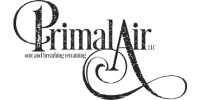
Understanding the Distinction: Speech Therapy vs. Orofacial Myofunctional Therapy

In the realm of oral health and communication disorders, two therapeutic approaches often intersect yet serve distinct purposes: speech therapy and orofacial myofunctional therapy (OMT). While both disciplines work toward improving oral function and communication, their methodologies, focus areas, and treatment approaches differ significantly. This comprehensive guide will help you understand the unique aspects of each therapy and how they complement each other in promoting optimal oral health and function.
The Foundations of Speech Therapy

Speech therapy, also known as speech-language pathology, primarily focuses on communication disorders affecting speech, language, voice, fluency, and swallowing. Speech-language pathologists (SLPs) are highly trained professionals who undergo extensive education, including a master's degree and clinical fellowship, to diagnose and treat various conditions that affect verbal communication and swallowing functions.
The foundation of speech therapy rests on several core principles that guide treatment approaches and methodologies. At its heart, speech therapy recognizes that communication is a fundamental human right and essential for social interaction, emotional expression, and cognitive development. SLPs work within this framework to address both the mechanical and neurological aspects of speech production, as well as the social and psychological components of communication.
Historical Development and Modern Practice
The field of speech therapy has evolved significantly since its inception in the early 20th century. What began as a focus primarily on articulation and stuttering has expanded to encompass a wide range of communication and swallowing disorders. Modern speech therapy incorporates evidence-based practices, technological innovations, and interdisciplinary approaches to provide comprehensive care.
Diagnostic Process
Before beginning treatment, SLPs conduct thorough evaluations that may include:
Standardized Testing
Language assessment tools
Articulation evaluations
Phonological processing tests
Voice quality measurements
Clinical Observations
Interactive play sessions
Conversational analysis
Behavioral assessments
Social communication observations
Medical History Review
Developmental milestones
Previous interventions
Related medical conditions
Family history
Treatment Methodologies
Speech therapists employ various treatment approaches based on individual needs:
Direct Intervention
One-on-one therapy sessions
Group therapy activities
Peer-mediated interventions
Family-centered treatment
Technological Integration
Speech analysis software
Augmentative and alternative communication (AAC) devices
Biofeedback systems
Educational apps and programs
Environmental Modification
Classroom accommodations
Workplace adaptations
Home environment adjustments
Communication partner training
Specialized Areas of Practice
Modern speech therapy encompasses several specialized areas:
Pediatric Speech Therapy
Early intervention programs
School-based services
Developmental speech disorders
Language delays and disorders
Adult Speech Therapy
Stroke rehabilitation
Traumatic brain injury recovery
Progressive neurological conditions
Voice disorders
Swallowing Therapy (Dysphagia)
Feeding disorders
Swallowing assessments
Modified diet recommendations
Swallowing exercise programs
Evidence-Based Practice
Contemporary speech therapy is firmly grounded in scientific research and evidence-based practices. SLPs regularly:
Incorporate new research findings
Evaluate treatment effectiveness
Modify approaches based on outcomes
Participate in continuing education
Understanding Orofacial Myofunctional Therapy
Orofacial myofunctional therapy (OMT) represents a specialized approach focusing on the proper function of oral and facial muscles. This innovative therapy addresses the underlying muscular patterns that may affect breathing, speaking, chewing, and swallowing. Unlike traditional approaches that might focus solely on symptoms, OMT delves deep into the root causes of orofacial dysfunction, working to retrain and optimize the complex network of muscles that regulate our vital oral functions.
The Science Behind OMT
Orofacial myofunctional therapy is grounded in the understanding of neuromuscular patterns and their impact on oral development. The therapy works by:
Neuroplasticity Principles
Utilizing the brain's ability to form new neural pathways
Creating sustainable muscle memory
Establishing proper functional patterns
Reinforcing correct muscle movements
Muscle Function Integration
Coordinating multiple muscle groups
Balancing muscle strength and flexibility
Optimizing muscle recruitment patterns
Enhancing muscular endurance
Developmental Considerations
Supporting natural growth patterns
Addressing age-specific needs
Promoting proper facial development
Establishing optimal oral rest postures
Comprehensive Assessment Process
OMT practitioners conduct thorough evaluations that include:
Physical Assessment
Facial muscle strength testing
Range of motion measurements
Resting posture evaluation
Breathing pattern analysis
Functional Assessment
Swallowing pattern observation
Chewing efficiency evaluation
Speech production analysis
Breathing coordination assessment
Structural Evaluation
Facial symmetry analysis
Dental alignment assessment
Palatal examination
Airway evaluation
Treatment Components
Modern OMT encompasses several key treatment areas:
Muscle Training Programs
Targeted exercise protocols
Progressive resistance training
Coordination exercises
Endurance building activities
Breathing Rehabilitation
Nasal breathing techniques
Diaphragmatic breathing training
Sleep breathing optimization
Exercise-breathing coordination
Rest Posture Training
Tongue positioning protocols
Lip competence exercises
Jaw alignment techniques
Postural awareness training
Clinical Applications
OMT has shown effectiveness in treating various conditions:
Developmental Issues
Tongue thrust patterns
Open mouth posture
Facial growth abnormalities
Dental alignment problems
Sleep-Related Disorders
Sleep-disordered breathing
Mouth breathing habits
Sleep apnea symptoms
Snoring reduction
Functional Challenges
Swallowing difficulties
Speech clarity issues
Chewing inefficiencies
TMJ disorders
Integration with Other Therapies
OMT often works in conjunction with:
Orthodontic treatment
Dental interventions
Speech therapy
Physical therapy
Sleep medicine
Evidence-Based Outcomes
Research has demonstrated OMT's effectiveness in:
Improving breathing patterns
Enhancing swallowing function
Supporting proper facial growth
Reducing sleep-disordered breathing symptoms
Optimizing orthodontic treatment outcomes
Long-Term Benefits
Successful OMT treatment can lead to:
Structural Improvements
Better facial symmetry
Improved dental alignment
Enhanced airway development
Optimal jaw positioning
Functional Enhancements
More efficient breathing
Better swallowing patterns
Improved speech clarity
Enhanced muscle coordination
Quality of Life Benefits
Better sleep quality
Reduced oral habits
Improved facial aesthetics
Enhanced overall well-being
Key Differences Between the Two Approaches
Treatment Focus
Speech Therapy:
Emphasizes communication and language skills
Focuses on sound production and articulation
Addresses cognitive-linguistic aspects of communication
Orofacial Myofunctional Therapy:
Concentrates on muscle function and positioning
Addresses underlying structural issues
Focuses on rest posture and functional patterns
Treatment Methods
Speech Therapy Methods:
Language exercises
Articulation drills
Voice exercises
Communication strategies
Interactive games and activities
OMT Methods:
Muscle exercises
Breathing techniques
Postural training
Rest position practice
Functional movement patterns
Treatment Goals
Speech Therapy Goals:
Improved communication clarity
Enhanced language comprehension
Better social communication skills
Proper sound production
Improved fluency
OMT Goals:
Proper muscle function
Optimal breathing patterns
Correct swallowing patterns
Improved facial growth and development
Enhanced oral rest posture
How They Work Together
While speech therapy and orofacial myofunctional therapy have distinct approaches, they often complement each other in treatment plans. Many patients benefit from both therapies, as addressing underlying muscle function through OMT can enhance the effectiveness of speech therapy interventions.
Collaborative Benefits:
Enhanced Treatment Outcomes
Comprehensive approach to oral function
Faster progress in both areas
Long-term sustainable results
Holistic Patient Care
Addresses both symptoms and underlying causes
Promotes overall oral health
Supports proper development
Preventive Care
Early intervention opportunities
Reduced risk of future complications
Better long-term prognosis
Choosing the Right Therapy
The choice between speech therapy and orofacial myofunctional therapy depends on various factors:
Presenting Symptoms
Primary concerns
Underlying issues
Related conditions
Age and Development
Developmental stage
Growth patterns
Learning capacity
Treatment Goals
Immediate needs
Long-term objectives
Quality of life impacts
Conclusion
Understanding the differences between speech therapy and orofacial myofunctional therapy is crucial for making informed decisions about treatment options. While both disciplines share some common ground, their unique approaches and focus areas serve different yet complementary purposes in promoting optimal oral function and communication skills.
For many patients, the most effective treatment plan may include both therapies, working in harmony to address both the immediate communication challenges and the underlying muscular patterns that affect oral function. Consulting with qualified professionals in both fields can help determine the most appropriate treatment approach for individual needs.
Next Steps
If you're considering either speech therapy or orofacial myofunctional therapy, consider these steps:
Schedule a professional evaluation
Discuss your specific concerns and goals
Explore treatment options and combinations
Create a customized treatment plan
Remember, whether you choose speech therapy, orofacial myofunctional therapy, or a combination of both, the key is to work with qualified professionals who can guide you toward optimal oral health and function.

